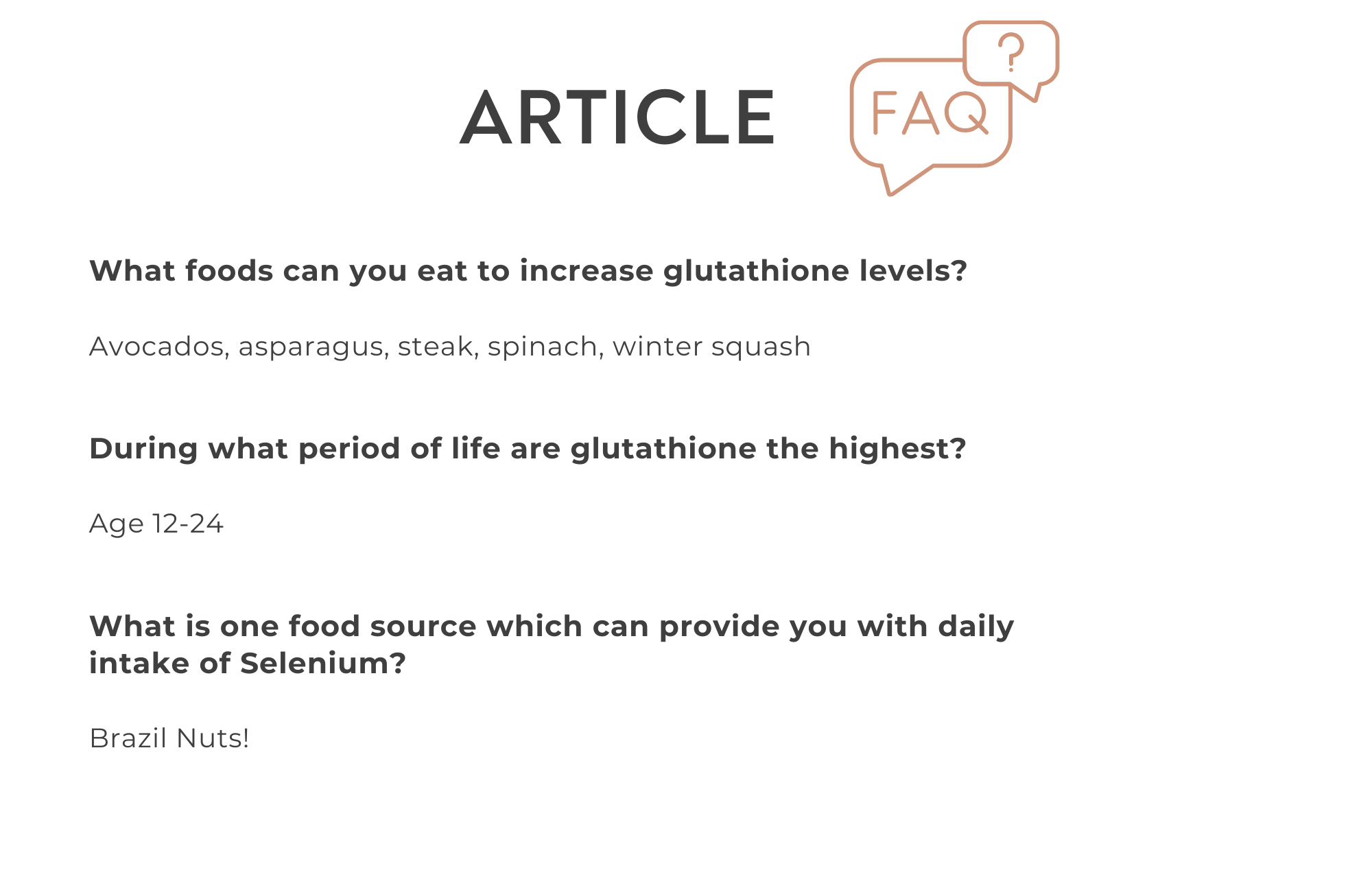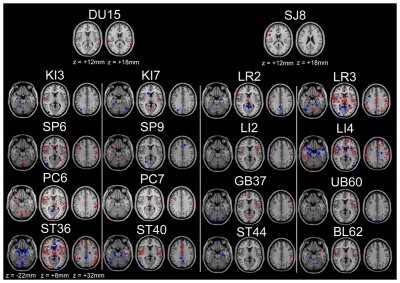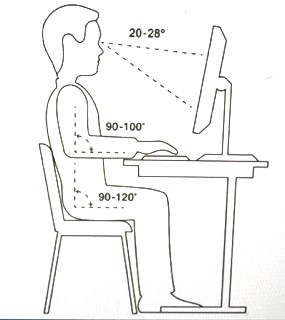

 919-999-0831
919-999-0831



Full-spectrum CBD (cannabidiol) is derived from the cannabis plant and contains various compounds, including cannabinoids, terpenes, and trace amounts of tetrahydrocannabinol (THC). While research on the specific effects of CBD on sleep is ongoing, some studies and anecdotal evidence suggest potential benefits for sleep, and full-spectrum CBD may offer additional advantages due to the entourage effect, where different cannabis compounds work together synergistically. Here are some potential benefits of full-spectrum CBD for sleep:
Remember – just because a company advertises ‘full-spectrum CBD’ does not mean that it’s what we are discussing here. It’s similar to the caution you need when buying eggs, and you see ‘cage-free’ or ‘free-range.’ Thanks to clever and deceptive marketing strategies, those phrases do not indicate that the chicken was allowed to roam on open pastures eating grass and bugs – that’s exclusive to ‘pasture-raised.’
The CBD market is far more unregulated than an established product like eggs, so it’s essentially the Wild Wild West, and it’s up to you to be informed and do your homework.
What authentic full-spectrum CBD indicates is a product that includes the full range of beneficial cannabinoids, terpenes, and other unique phytonutrients found in hemp. The best way to verify this claim is by looking at the company’s COA, and check to make sure a variety of cannabinoids and terpenes are present.
It’s important to note that while there’s promising research and anecdotal evidence, individual responses to CBD can vary.
It’s advisable to consult with a healthcare professional before starting any new supplement, including CBD, especially if you have underlying medical conditions or are taking other medications.
Always check for recent research and consult with a healthcare provider for personalized guidance.
Your Partner In Health,
Clarissa A. Kussin, ND, FMCHC, ERYT-500

Katie Depre LAc, LMBT, FABORM, NCCAOM

Though often described as traditional or ancient medicine, research has proven that Acupuncture has its place alongside modern medical practices. Hair-thin needles are placed in precise and therapeutic point locations along meridians. Meridians have been shown to mirror the fascial network of the body. Fascia surrounds all of the organs, muscles, bones, and nerve fibers. These points are located alongside nerve endings and blood vessels, thereby directly influencing blood flow and sensory nerves in the area (2,3). Functional brain imaging has shown changes in the brain when these points are needled (1). Since the brain controls the systems of the body (hormones, blood flow, stress responses, organ function, reproduction, etc.), influencing the brain and nervous system with Acupuncture will impact our health. Treatment encourages the body’s own systems of balance, commonly known as homeostasis.

The National Center for Complementary and Integrative Health outlines many of the researched treatable conditions (4); these include: pain management, osteoarthritis, sciatica, fibromyalgia, cancer pain, irritable bowel syndrome, asthma, depression, allergies, infertility, and menopause symptoms. Though more chronic conditions will require a series of treatment for complete resolution, I have personally witnessed immediate relief from insomnia, digestive complaints, anxiety, and pain in my clinic. Especially because it is a non-pharmaceutical approach, many patients search out Acupuncture for treatment to acute and chronic conditions.
As a Fellow of the Acupuncture and Traditional Chinese Medicine Board of Reproductive Medicine, FABORM, I treat many patients with their fertility goals. By regulating the menses, we can prepare the body for pregnancy. Fertility work is best done weekly for three months prior to conception, as it takes three months for the egg to develop in the ovaries. During times of sympathetic stress (the flight or fight response), blood is shunted away from the ovaries and uterus. This can negatively impact egg quality and the thickness of the uterine lining. By encouraging blood flow to these reproductive organs, switching the nervous system into a parasympathetic state (rest, digest, and repair), and regulating the Hypothalamic-Pituitary-Ovarian Axis, we set the body up for success.
For patients undergoing IVF, the Paulus Protocol is utilized. This is a series of points done before and after an embryo transfer. “Clinical pregnancies were documented in 34 of 80 patients (42.5%) in the acupuncture group, whereas the pregnancy rate was only 26.3% (21 out of 80 patients) in the control group (5).”
Please reach out today if you have specific questions on how Acupuncture can help you realize your health goals!
Warmly,
Katie Depre LAc, LMBT, FABORM, NCCAOM
(919) 808-2638

Ergonomics
Ergonomics is the study of people’s efficiency in their work environment. The position of your monitor, how you sit, how long you sit, and many other variables can affect your work efficiency. It is also important to consider the impact that working in front of a computer can have on your mental and physical health. Here are several suggestions for making your work environment more productive, enjoyable, and healthier.
Computer and Visual Ergonomics
Mental and Physical Health
Call our office and schedule and appointment with one of our Health Coaches to learn more about ways to support a healthy mind and body while managing a robust work schedule.
Yours in health,
Clarissa A. Kussin, ND, FMHC, ERYT-1000

References:
1. Long J, Richter H. The pitfalls of the traditional office ergonomics model in the current mobile work environment: Is visual ergonomics health literacy the remedy? Work. 2019;63(3):447- 456. doi:10.3233/WOR-192937
2. Randolph SA. Computer Vision Syndrome. Workplace Health & Safety. 2017;65(7):328-328. doi:10.1177/2165079917712727
3. Chantal Coles-Brennan. Management of digital eye strain. Clin Exp Optom. 2019;102(1):18-29. doi.org/10.1111/cxo.12798
4. Dempsey PC, Larsen RN. Benefits for Type 2 Diabetes of Interrupting Prolonged Sitting With Brief Bouts of Light Walking or Simple Resistance Activities. Diabetes Care. 2016 Jun;39(6):964-72. doi: 10.2337/dc15-2336
5. Peddie MC, Bone JL. Breaking prolonged sitting reduces postprandial glycemia in healthy, normal-weight adults: a randomized crossover trial. Am J Clin Nutr. 2013;98(2):358-366. doi:10.3945/ajcn.112.051763
6. De Couck M, Caers R. How breathing can help you make better decisions: Two studies on the effects of breathing patterns on heart rate variability and decision-making in business cases. Int J Psychophysiol. 2019 May;139:1-9. doi: 10.1016/j.ijpsycho.2019.02.011.
Erica Nelson, MSPH, NBC-HWC
They say the mind is a wonderful servant but a terrible master. Are you in charge of your mind and body? Or do you feel like you are at the mercy of your thoughts and feelings (physical and emotional)? This article shares cost-free and drug-free practical strategies to take back control of your physical and emotional feelings and make your mind your servant.
Your nervous system is complicated but you do not need to know all of the details to have a significant impact on its function. In this article you will find a very simple description of how one specific nerve, the Vagus, connects your physical and emotional feelings. You will also learn practical things you can do to reduce anxiety, improve digestion and overall wellbeing.
Starting from the top, the brain branches out from your skull through 12 cranial nerves (and their branches) known as the peripheral nervous system.

Starting from the ‘bottom’ the gastrointestinal ‘mind’ is called the enteric nervous system (ENS.) The ENS has more nerve cells than the rest of the entire nervous system combined (more than 100 million!) and is capable of functioning independently of the rest of the nervous system.
The Vagus nerve is one of the 12 cranial nerves. It connects your brain to your digestive system and vice versa. It sends and receives both motor (movement) and sensory (feeling) signals. Beyond the digestive system, it touches nearly every major organ and plays a role in heart rate, respiration, facial expression, inflammation, sweating, reproduction and more.
Photo courtesy:
www.drarielleschwartz.com

The word ‘Vagus’ comes from the Latin for ‘wander’ but, as Tolkien wisely said, ‘Not all who wander are lost.’ This nerve, and its branches serve as the information super highway in your body and provide the early warning system for threats, internal and external.
Most of these functions are reflexes that happen without you thinking about them to keep you alive. Can you imagine if you had to decide to shunt blood supply from your stomach to your heart and lungs to run from danger? But sometimes the reflexes are not actually helpful in the moment and we are left feeling like our stomachs have minds of their own – because they kind of do. But when we know what the reflexes respond to, we can take steps to trigger a more desirable response.
Toning the Vagus for Stress Resilience
Have you ever felt your mouth go bone dry just as you are about to begin a presentation or performance? Or worse, maybe you feel like you are going to throw up? Or need to go to the bathroom RIGHT NOW. This is your reflexive response to stop bodily secretions and smooth muscle contractions in your GI tract so you can spend your resources elsewhere.
When you perceive a threat, your brain and body make preparations to respond and additional resources – oxygen, fluids, etc. – are diverted from digestion and reproduction until you are physically and psychologically safe again. Your heart rate, blood pressure and breathing increase, your pupils dilate, your mouth may go dry, your muscles may begin to tremble all of these are signs of activation of your sympathetic nervous system.
It is the job of the parasympathetic nervous system, including the Vagus nerve, to restore resources to ‘rest and digest’ once the threat (perceived or real) is passed. Depending on the duration and intensity of the threat, it may take 20 minutes or 20 years to return to a healthy resting state. When left unattended, chronic stress or PTSD can have long-term effects on your physical, cognitive and emotional health.
This exercise lengthens and contracts the Vagus nerve to activate it. Get on your hands and knees on the floor. Begin with a neutral spine and then press down through your hands and knees to arch your back upwards like a cat. Inhale while doing this. Then drop your belly down towards the floor and lift your breastbone forward and up. Exhale loudly while you do this, sticking your tongue out and even roaring like a lion.
Laughter really is one of the best medicines. Real laughter is best but even fake laughter will engage the Vagus nerve through contraction of the diaphragm.
A warm embrace, ideally 20 seconds or longer, will stimulate the part of the Vagus nerve that runs down your back and can trigger the release of a hormone called oxytocin, known as the feel-good hormone.
The Vagus nerve is connected to your vocal cords and the muscles at the back of your throat. All of these activities activate the muscles around the nerve and can stimulate it. Choose one or more and find time for it each day.
Place the tip of your tongue against the ridge of tissue just behind your upper front teeth, and keep it there through the entire exercise. Exhale completely through your mouth, making a whoosh sound. Close your mouth and inhale quietly through your nose to a mental count of four. Hold your breath for a count of seven. Exhale completely through your mouth, making a whoosh sound to a count of eight. This is one breath. Now inhale again and repeat the cycle three more times for a total of four breaths.
This works for a couple of reasons. First, when you are walking, your eyes naturally move side-to-side and trigger a response in your brain that distracts it from threat. Second, you are using up some of the ‘energy hormones’ that were dumped into your system to respond to the threat and may be making you feel ‘jittery.’
Stroke your neck from your ear to your clavicle 10 times on each side. Again, your Vagus nerve is connected to these muscles. Moderately intense massage to the area will stimulate the nerve and help to restore a resting state.
You do not have to be at the beck and call of your body’s reflexes. Choose one or two of the strategies above and integrate them into your day to improve your ability to respond the way you want to – instead of simply reacting – the next time you are faced with a stressful situation.
Call our office and schedule an appointment with one of our health coaches to learn more healthy strategies to reduce and respond to physical, emotional and cognitive stress.
Your Partner in Health!
Erica Nelson, MSPH, NBC-HWC


The last couple of years have been hard on everyone. The pandemic has caused so many disruptions in our lives – lost jobs and income, friends and loved ones becoming ill, children home from school and missing socialization, feeling more isolated and less connected. It’s no wonder that an even greater number of people have reported feeling anxious.
Talk therapy, supplements, exercise and medication are beneficial solutions for curbing anxiety. There are also practical strategies you can utilize when experiencing anxiety.
1) Box Breathing – If you’ve ever practiced meditation then you know how helpful mindful breathing can be to calm your nervous system. Close your eyes and then breathe slowly in for four counts. Hold your breath for four counts and then exhale slowly for four counts. At the bottom of the exhale count to four while doing nothing. Repeat this process for a total of four times. Once completed you should feel much more relaxed and centered.
2) Name Objects in Your Line of Vision – If your thoughts are spiraling out of control you can change your state of mind by simply naming objects that you see. Keep doing this as long as you need to until you feel your energy begin to mellow. This works because you are changing which hemisphere of your brain is being used, moving from the emotional side to the logical side.
3) Mantras – Taking the time to recite a mantra is valuable for grounding feelings of anxiety. Some examples are “I am safe”, “I am peaceful”, “I am loved” or “With every breath I feel myself relaxing”. Write down your own affirmations that resonate with you the most and then say them repeatedly when you’re feeling anxious.
4) Gratitude – We cannot be in a state of fear or anxiety and be in a state of calm or peace a the same time. Pausing to “count your blessings” will transition your energy into a more relaxed vibration. Write down five things you are grateful for or if you can’t write them down, list them in your mind.
The next time you find your heart beating fast or your mind racing, try practicing these strategies to ground your energy.
The next time you find your heart beating fast or your mind racing, try practicing these strategies to ground your energy.
If you or someone you know can benefit from working with our health coaches please contact our office to make an appointment.
In health,
Sara Yadlowsky, FMHC

Caroline Wilson, M.Ed., FMHC
 |
Curious about how using an infrared sauna can benefit you? Keep reading to learn why this has become one of my favorite health practices. Infrared saunas can provide a host of health benefits by using far- and near-infrared light to penetrate body tissue. Now they are even more accessible with smaller, in-home options. Unlike traditional saunas, which must heat the air to very high temperatures, infrared saunas heat your body while the surrounding air stays cooler. Infrared saunas are definitely more comfortable than traditional saunas which is a big bonus if you are sensitive to heat. Plus, infrared energy can go deeper into your skin, helping you sweat even more and helping your cells eliminate toxins better. 7 Benefits of Infrared Sauna: 1) Detoxification – Sweating is one of the body’s most natural ways to eliminate toxins, making it a crucial part of detoxification. 2) Cardiovascular Health – Countless studies have shown that the cardiovascular benefits associated with infrared sauna therapy are numerous and varied, and include improved circulation, lower blood pressure, enhanced vascular function and lower risk of heart-related disease. 3) Immunity/Cell Health – The heat generated by an infrared sauna stimulates energy at a cellular level which, in turn, increases the body’s production of white blood cells. Infrared sauna usage can also strengthen the immune system by stimulating cell regeneration. This kind of regeneration can help your body dispose of cells that might be old, damaged, or ineffective and replace them with new cells. 4) Pain Relief – If you suffer from muscle aches or joint pain, infrared saunas can relieve this form of inflammation by increasing circulation and relaxing your muscles. 5) Physical Fitness – The heat generated by an infrared sauna will cause your core temperature to increase, which can also lead to an increased heart rate – the same increase in heart rate that you experience when exercising. An article titled, Effect of Sweating, in the Journal of the American Medical Association concluded that a 30-minute infrared sauna session could burn roughly 600 calories. 6) Relaxation – The heat generated by the sauna will also help to relax muscles and relieve tension throughout the body, allowing you to relax and de-stress. 7) Anti-Aging/Skin Purification – Infrared sauna technology can help purify your skin by eliminating toxins from your pores and increasing circulation, resulting in clearer, softer, and healthier-looking skin. If you’re interested in exploring the benefits of infrared saunas, here are a few things to keep in mind: Start slowly. It doesn’t feel as hot when you walk into an infrared sauna, so you may feel inclined to stay in there a long time right off the bat. Start off by sitting for 5-10 minutes and work your way up from there. Stay hydrated. Ensure you drink enough to stay hydrated, as you’ll lose fluid through sweating. Listen to your body. Our bodies are wise and will start to show signs if they are unhappy. Pay attention to how you’re feeling. Warm and sweaty is OK – but if you feel excessively thirsty, dizzy, nauseous, headache-y, or have any other symptoms that do not feel right, get out of the sauna. Don’t eat a huge meal. You wouldn’t gorge before going for a run or other vigorous exercise – it’s best to sit in a sauna on a light or empty stomach. Rinse off in a clean shower. With all of the impurities released during a sauna we want to ensure they are washed away  There are many local spas that offer Infrared Sauna as a service or you can explore purchasing one for your own home. Two reputable companies are Sunlighten and Therasage. Contact our office to schedule an appointment with one of our Health Coaches to learn more about healing health practices, like infrared sauna, that can help you along in your journey to optimal health. Your Partner in Health! Caroline Wilson, M.Ed., FMHC  References: Biro, S. (2003, November). Clinical Implications of Thermal Therapy in Lifestyle-Related Diseases. Experimental Biology and Medicine (Maywood), 228(10), 1245-1249. Laukkanen, T., Khan, H., Zaccardi, F., & Laukkanen, J. A. (2015). Association Between Sauna Bathing and Fatal Cardiovascular and All-Cause Mortality Events. JAMA Internal Medicine JAMA Intern Med, 175(4), 542. doi:10.1001/jamainternmed.2014.8187. |
Robert Baric, DC

We have invited several expert practitioners to educate our practice community on approaches to healing that are complementary to Functional Medicine. Our expert this week is Robert Baric, DC who will educate us on Neurofeedback. Neurofeedback is quite different from “biofeedback” with which you may be familiar. Dr. Baric is board certified in neurofeedback and has over 26 years of clinical experience. His passion for health and wellness has emerged throughout the years as he continues to deliver the most up to date knowledge to his patients, while providing them with impactful treatment in addition to neurofeedback, including nutrition, acupuncture, chiropractic techniques, and other applied therapies. I will hand off the microphone to Dr. Baric.
Neurofeedback Therapy: A Compliment to Traditional Medicine
Amidst 56 years of positive research and clinical trials in neuropsychology, neurofeedback has emerged as a modality of complementary therapy that is “evidence based”. Neurofeedback therapy has gained increasing popularity due to its non-invasive properties and the sizable body of research supporting its efficacy, along with it being an alternative to traditional pharmacological treatment. Essentially, neurofeedback is EEG-biofeedback, where a method of retraining brain waves through operant conditioning is utilized. Various conditions like ADHD, depression and anxiety, addiction, and insomnia are all cognitive disorders that can negatively impact an individual’s brain waves.
The first step to neurofeedback therapy is an initial brain scan that determines if a patient is a suitable candidate for neurofeedback therapy. A quantitative electroencephalogram (qEEG) shows brain activity and function allowing professionals to understand what ailments may be present and what can be done to mitigate symptoms at the root of the problem. The qEEG process takes just 45 minutes, recording brain waves with the eyes closed and opened. The results are then analyzed and a customized training protocol is created specifically tailored to the patient. Treatment includes monitoring the dysfunctional area while rewarding the preferred wave formation, with the reward being a TV show of the patient’s choice. Brain waves are monitored, and using operant conditioning, stimuli are adjusted to guide the brain waves back into a healthy pattern. If accepted as a patient, most individuals experience a marked improvement by sessions 10-15, most conditions requiring 40 sessions to finalize neuroplastic changes.
There are multiple conditions for which neurofeedback is impactful, with few being the most prominent throughout my years of experience.
Depression and Anxiety
The zeitgeist proves the need for complementary treatment options for individuals suffering with depression and anxiety. Approximately 33.7% of the population suffers with anxiety related disorders in their life, often comorbid with depression (1). The Journal of Clinical Psychopharmacology yielded results showing significant improvement in patients symptoms of depression with neurofeedback (2). Similar results were shown in patients with anxiety disorders, with the Journal of Industrial Psychology exhibiting results where neurofeedback therapy was deemed essentially as effective in reducing symptoms of anxiety as medication (3).
ADHD
Children and adults suffering with ADHD recognize notable improvements in their focus and attention after a series of neurofeedback treatment. When a group of students received either neurofeedback or pharmacological support, evidence showed those in the neurofeedback group improved in executive control to a greater extent than the pharmacological support group (4). A plethora of research supports the decrease of ADHD symptoms in both children and adults.
Insomnia
Brain waves play a significant role in the ability to sleep. If a patient is unable to enter into a restful and deeply restorative state, there could be a misalignment in brain waves causing a patient to feel unwell and never feel rested. Medications can be utilized to aid in sleep, but frequently result in a feeling of grogginess upon waking. Neurofeedback actually tackles the problem at hand at the root by retraining the brain waves in order to get quality sleep without the use of medications.
For issues involving the brain and cognition, it is essential to tackle the issue from multiple directions, utilizing multiple forms of treatment. As a pain-free and relaxing process, neurofeedback will maximize its growth throughout the coming years. Neurofeedback will continue to provide millions of individuals with a fully customized treatment plan to ensure optimal brain health, and alleviate years of morbid symptoms.
If there are any questions about neurofeedback please reach out through email or phone and MyBrainDr would be happy to discuss any inquiries.
Email: admin@mybraindr.com
Phone: 919-721-4800
Website: www.MyBrainDr.com

At Carolina Total Wellness we understand that our services and support are sometimes only part of the solution in optimizing our patients’ health. We have worked over the years with various medical providers in our community to establish a base of high-quality clinicians who are able to meet the various health needs of our patients. This is the first in a series of guest blogs from one of our community providers. Dr. Kari Smith, PT, DPT, describes one of her approaches to treating pain – dry needling.
What is dry needling?
Dry Needling is a soft tissue manual therapy technique performed by a certified clinician with a professional degree in the medical field. The clinician safely guides a sterile monofilament needle into dysfunctional muscle tissue to aid in pain reduction and restoration of proper movement patterns. This technique involves identifying and treating a muscle trigger point (a collection of muscle fibers that lack healthy blood supply, have a higher resting electrical state and contain pain-generating chemicals). Left untreated, muscle trigger points can lead to altered joint movement, as well as increased stress on surrounding soft tissue.
A clinician may also use dry needling with electric stimulation to release overactive primary muscles, or to wake up dormant stabilizing muscles by improving their neural response. Primary muscle groups are comprised mostly of fast-twitch muscle fibers, so they fatigue quickly and require de-activation to recover. Stabilizing muscles contain more slow-twitch fibers and can withstand longer bouts of activation. Our bodies experience pain or movement dysfunction when the stabilizing muscles are inactive, and the larger muscle groups work over-time. Through dry needling with electric stimulation, the clinician activates these stabilizing muscles so that stress is taken off primary muscle groups, allowing these larger muscle groups to function optimally, but also have time for recovery.
Does it hurt?
The needles are much smaller than ones used for an injection, so often patients do not feel the insertion of the needle in the skin. There is also nothing injected (as the needle is solid), so patients do not experience the burning sensation that is commonly felt when a fluid is injected into the body. The most common sensation is a light cramping when the needle activates a deep twitch response in the trigger point. This is an effective response that is documented in the literature that indicates that the trigger point has been released and immediate changes in muscle length are observed. Some patients feel soreness after the treatment, similar to muscle fatigue after a strenuous workout. Your therapist will be in constant communication with you throughout the procedure to alter or cease treatment as needed.
How will I know the treatment is effective?
Your therapist will perform a series of pre-treatment tests to determine areas of pain, movement dysfunction, or loss in strength. Following treatment, these areas will be re-assessed for improvement, and often there are immediate results. Your therapist will then recommend corrective exercises to maintain the gains made during the manual therapy session.
If you are suffering from pain and feel that dry needling may be of benefit to you, feel free to discuss this with your functional medicine physician at Carolina Total Wellness or contact Dr. Smith at Prevail physical therapy.
| Dr. Kari Smith, PT, DPT Founder, Owner, Physical Therapist, Prevail p 919-482-9648 | f 919-589-4839 kari@prevailphysio.comwww.prevailphysio.com 100 Keybridge Dr., Morrisville, NC 27560 |
Functional medicine is a science-based health care approach to assess, prevent and treat complex chronic disease.
![]() Learn More
Learn More
After a brief allergy test, you can begin sublingual immunotherapy (SLIT), or allergy drops under the tongue. No more allergy shots!
![]() Learn More
Learn More
Learn how to prepare for your visit and what to expect at your initial consultation and at your follow-up visits with our office.
![]() Learn More
Learn More